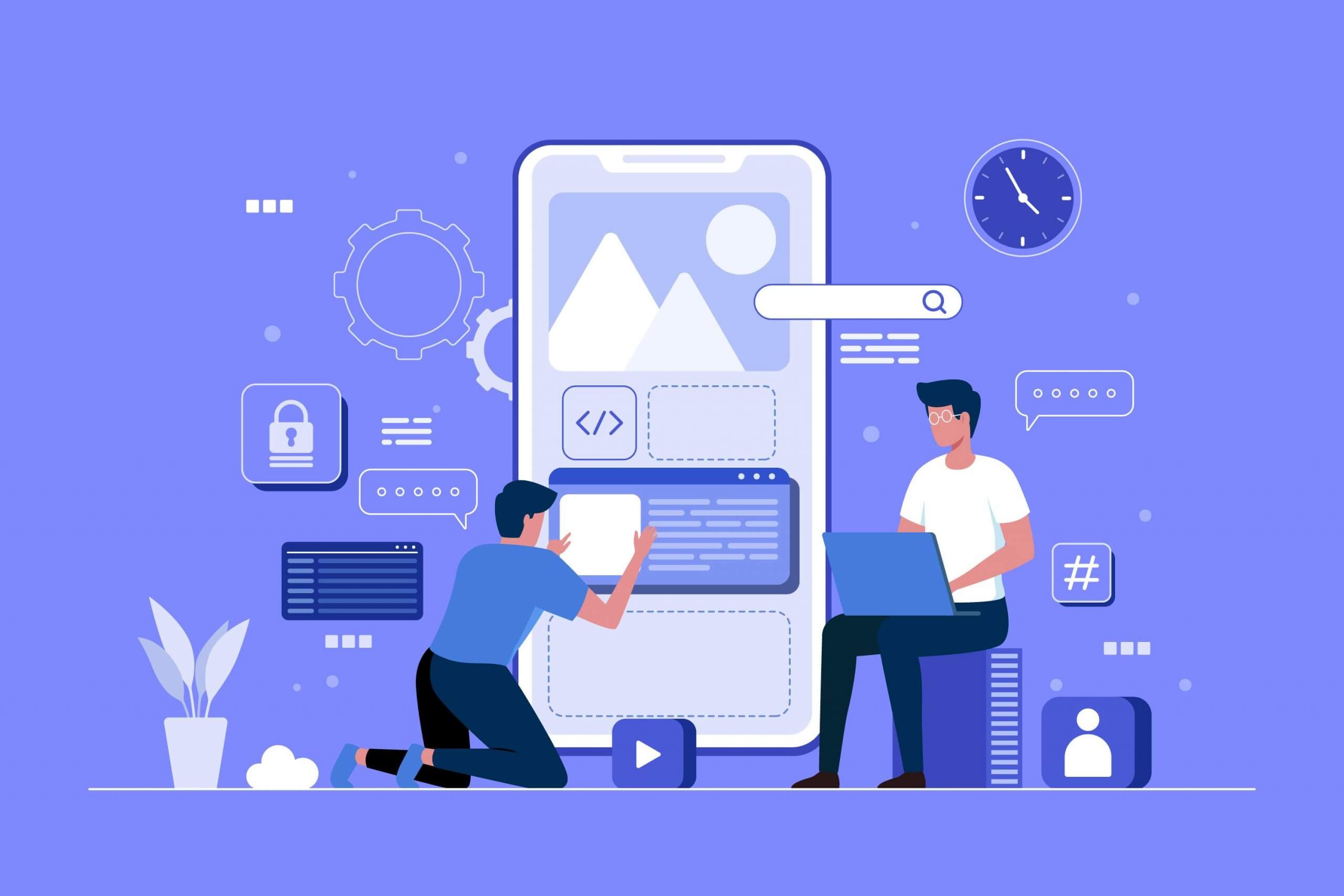The number of smartphone users has increased immensely over the past years. The revenue generated by mobile apps in 2021 has reached a whopping value of $693 billion. Every business is taking advantage of the strong impact of mobile apps.
To ensure that the digital presence of your business is elevated, an aesthetic and efficient mobile app is mandatory. This is possible only if your organization follows a sophisticated mobile app development process.
A successful mobile app development procedure depends on various factors. These include an innovative idea, highly skilled developers, etc.
Steps Of Mobile App Development Process
The development process of a mobile-based application involves the following steps:
Step 1: Strategizing
The initial phase involves devising a strategy for planning your mobile-based application. You must brainstorm app ideas and conduct comprehensive market research.
You must be clear about the objective of developing an app and set reasonable targets. This phase involves the following activities:
- Identify details of target users
- Conduct detailed research on competitors
- Define objectives and goals of the mobile app
- Choose a suitable platform for your app
It normally takes up to six months to develop an app so planning everything is a huge plus.
Step 2: Analysis and Planning

The next phase is to list down the functional requirements of the application. The business analysts conduct a deep analysis of all the modules and features.
Then they conduct brainstorming sessions with the project managers, designers, developers, and other stakeholders to measure the feasibility of the features.
A roadmap is laid down and milestones are defined to keep track of the progress on the app development. Choose the technology stacks according to app requirements.
This phase also involves selecting an app name that is unique and resonates well with your business.
Step 3: Designing a User Interface
The design of an application is extremely significant. It must be attractive, simple, and effortless. The user must have an amazing experience while navigating through your app.
The app design must incorporate all the basic features and functionalities aesthetically. The UI/UX must be engaging.
The design process involves in the following stages:
- Designing data architecture and workflow of the application
- Wireframes
- Prepare a style guide
- Create mockups
- Prepare prototypes through tools such as Figma, Invision, etc.
Step 4: App Development
This step is initiated by planning how the development procedure is carried forward. It involves:
- Defining the technical architecture of your app
- Choose a suitable technology stack
- Define milestones and deliverables
Each mobile app comprises of three major parts including:
Back-end
The backend comprises server-side functions and databases. The programmers must build a strong backend to ensure that the working and performance of the app are uncompromised.
API
The Application Programming Interface serves the purpose of building a bridge between the back-end and front-end.
Front-end
Users use the front-end so it involves the interactive elements. The apps that operate without an internet connection utilize local storage.
The programming language and app development platform must be chosen according to the business requirements and industry trends.
The IT industry evolves with each passing day and you must choose a platform that incorporates the changing trends. Adopt an agile methodology for mobile app development so that requirements are flexible.
The deliverables are sent to the QA team after each milestone for testing purposes. It’s important to complete the tasks timely for keeping a check on the resources.
Step 5: Testing
The next phase is the testing process which ensures that the mobile application is secure, stable, and usable. The responsibility of the QA team is to identify the bugs, issues, and concerns found in the app.
The testers must ensure that the app is working according to the defined requirements and is responsive across multiple platforms and browsers.
The QA team must be involved in the mobile app development process right from the start so that they are aware of all the features and flows.
The bugs and suggestions are sent to the development team for fixes and code updates.
Testers perform the following throughout the QA phase:
- UX testing
- Functional testing
- Performance testing
- Security testing
- Compatibility testing
- Alpha and beta testing
Step 6: Deployment and Maintenance
You have to submit your app to app stores for native apps. Create a developer account and then upload your app. The app must follow the rules and guidelines specified by the platform.
The metadata required for the app includes the following information:
- App title
- Description
- Category of app
- Focus and related keywords
- Launch icon
- Screenshots
Conclusion
The mobile app development process is a comprehensive procedure that involves a large team. Each stage involves different activities and tasks and all that adds up to deliver a successful app for your business.











